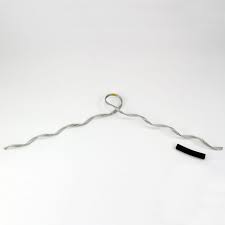
A spool tie is a hardware used to support and secure conductor wires to the transmission towers. They are also known as conductor ties or guy wire spool ties. A spool tie helps maintain the structural integrity of the transmission systems. They also hep prevent damages to the conductors and towers. A spool tie is from durable materials such as steel, aluminum or high-strength alloys. These materials are best suited for Southeast Asian environmental conditions. Common types of spool ties include compression, wedge-type, compression, preformed, twist-lock and bolted spool ties. They find use in applications such as transmission and distribution lines, substations, telecommunication and cable management.
Key features of spool tie
Spool ties are available in different designs and materials to suit the specific needs of the application. The various features help the tie to increase the safety and reliability of the transmission lines. Specific features depend on its intended application and the manufacturer. The following are the common features of the spool tie.

- Material – spool ties are from durable materials that ensure they can withstand the mechanical stresses and environmental conditions.
- Flexibility – they offer flexibility that allows for thermal expansion and contraction of conductors. This is mostly for accommodating movement due to wind, temperature changes and other factors.
- Corrosion resistance – they have coatings that help them resist corrosion, extending their lifespan in outdoor conditions.
- Compatibility – they are compatible with other hardware and components used in same application. This ensures they work seamlessly within the overall system.
- Secure attachment – they securely attach the conductor, cables or structures. They do these using mechanisms such as bolts, wedges, compression or twist-lock designs.
- Load distribution – they also distribute loads evenly across the conductor they attach to. This helps prevent damage and ensure stability in high-tension applications.
- Ease of installation – spool ties are straightforward to attach and install on the transmission lines.
- Safety – they help prevent conductors from sagging or coming into contact with other conductive elements. This helps reduce the risk of electrical hazards and damage to equipment.
Selection and installation of spool tie
The right selection of the spool tie should ensure the safety, reliability and efficiency of the specific application. This includes considering factors such as mechanical load, spacing and alignment, installation and maintenance, compatibility, voltage level and conductor size. The installation depends on the specific application and the type of spool tie used. The following is a basic installation guide of the spool tie.
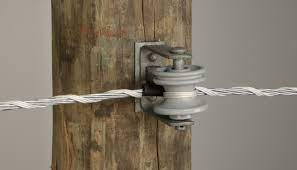
- Safety precautions – ensure that you have the appropriate safety gear. This includes gloves, helmets and safety glasses.
- Preparation – prepare the spool ties for installation by assembling components.
- Positioning – place the spool tie at the desired location on the conductor or structure. Ensure it is properly aligned and oriented according to the application requirements.
- Attachment – securely attach the spool tie to the conductor or structure using the correct methods. These include using bolts, wedges, compression or twist-lock mechanisms.
- Tighten and secure – tighten the fasteners to ensure a secure and stable connection.
- Adjustment – make necessary adjustments to ensure the conductor aligns and spaces properly.
- Inspection – perform a visual inspection to ensure they are correctly positioned and secure.
- Documentation – keep records including the type and quantity of spool ties used, location and any safety information.
Maintenance and inspection of spool tie
Spool ties in Southeast Asia require regular and frequent maintenance and inspection. This helps to prevent unexpected failures and outages in critical infrastructure systems. Additionally, it is advisable to seek professional help for maintenance and inspection of spool tie. The following is a basic maintenance and inspection guide for the spool tie.
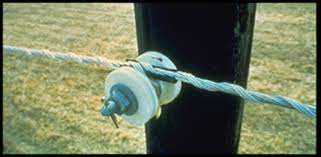
- Conduct routine visual inspections of spool ties to check for signs of wear, damage or corrosion. Check components like fasteners, locking mechanisms and insulation.
- Remove dirt, debris and vegetation accumulated around or on the spool ties.
- Apply corrosion-resistant coatings or treatments to protect spool ties from corrosion.
- Inspect the insulation for cracks or damage to improve compromise and safety and performance.
- Regularly check the tightness of bolts, nuts or other fasteners to secure the spool ties.
- Inspect the alignment and spacing of the conductors supported by spool ties. Ensure proper positioning and separation.
- Consider the local climate and environmental factors such as heavy rainfall and wind to prevent wear and damage.
- Engage professionals to conduct detailed inspections and assessments of the entire spool tie system.
- Maintain detailed records of the inspections and maintenance activities. This is including photographs and any replacements made.
Comparative analysis of spool tie in Southeast Asia
A comparative analysis involves evaluating different types, materials and designs of spool ties. This is to determine their suitability for the region’s diverse climates and applications. The choice of spool ties depends on the region’s environmental factors, project requirements and budget considerations. Additionally, consider the long-term benefits of reduced maintenance and extended service life. The following are the key factors to include in a comparative analysis in Southeast Asia.
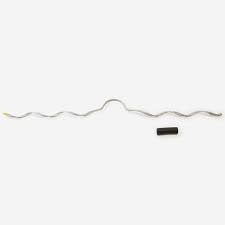
- Material – common and best materials for spool ties include steel and aluminum. These materials are lightweight, durable and corrosion resistance. This makes them suitable for a wide range of applications in Southeast Asia.
- Corrosion resistance – some spool ties come with special coatings that offer protection against corrosion. This is beneficial for the tropical and coastal regions in Southeast Asia.
- Insulation – insulated spool ties help prevent electrical issues, power loss and risks of corona discharge.
- Spool tie designs – some of the common designs for spool ties include wedge-type spool ties, twist-lock and preformed spool ties. Each design has their benefits and limitations to consider.
- Environmental consideration – Southeast Asia has a tendency of high humidity and UV radiation. Spool ties in these regions require regular inspections and UV resistant materials and coatings.
- Installation and maintenance – spool ties are easy to install to reduce maintenance and labor costs.
- Cost and budget considerations – cost effective spool ties are most suitable to avoid compromising on quality and safety.
- Voltage level – the spool tie should be able to handle the voltage level of the application.
- Local regulations – they should also comply to the local regulations and industry standards. This helps to ensure safety and reliability.
Certifications and standards in Southeast Asia
Certifications and standards ensure the quality, safety and reliability of the critical components. The spool ties should comply to the different electrical standards and regulations in Southeast Asia. The following are the common standards and certifications for spool ties in Southeast Asia.
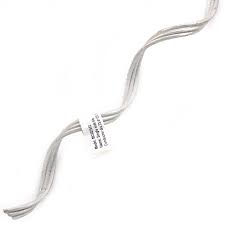
- IEC standards – these are standards related to application, material and electrical properties for spool ties.
- ASTM standards – these are for materials and testing procedures in various industries such as construction and infrastructure.
- ISO certification – this indicates quality of the spool ties used in Southeast Asia.
- Local and national standards – spool ties must adhere to each of the set local and national standards in each country.
- IEE standards – these are often used as guidelines for electrical components and systems. They help to ensure electrical safety and performance.
Regional market for spool tie in Southeast Aia
There are several factors that shape the regional market for spool ties in Southeast Asia. The market favors manufacturers and suppliers who can provide high-quality, compliant and regionally suitable spool ties. Additionally, the manufacturers and suppliers should understand the local regulations, environmental factors and infrastructure projects for success in the region. The following are the factors that shape the regional market for spool ties in Southeast Asia.
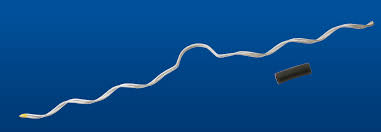
- Infrastructure development – expansion of the electrical power transmission and distribution networks helps to support economic growth. It also leads to the increased use of the spool ties in these projects.
- Increased electricity demand – the rising demand for electricity in the region drives the need for efficient and reliable power transmission systems. spool ties help ensure the stability and safety of overhead power lines.
- Telecommunication expansion – expansion of these networks requires the use of spool ties. They help to secure antennas, cables and equipment.
- Urbanization – the rapid urbanization leads to the construction of high-rise buildings. These buildings require spool ties for support and connection to support structures.
- Environmental conditions – Southeast Asia includes conditions such as humid tropical and coastal areas. These require corrosion resistance spool ties to withstand extreme weather conditions.
- Renewable energy projects – spool ties help to secure power cables and conductors in renewable energy installations.
- Competition – the market is competitive with both the local and international manufacturers. This may include quality and cost-effective spool ties to win in the market.
- Trade and export opportunities – some of the countries are becoming manufacturing hubs for spool ties and related electrical components. This leads to export opportunities to neighboring regions.
Frequently asked questions
Spool ties are hardware components used to secure and support conductors, cables and wires in electrical transmissions. They help maintain safety and reliability of the overhead transmission lines.
Tropical climates in Southeast Asia can lead to humidity, corrosion and extreme weather conditions. These regions require spool ties that can withstand these conditions to ensure long-term performance.
Spool ties find use in various applications such as transmission lines, distribution systems, telecommunication towers and more.